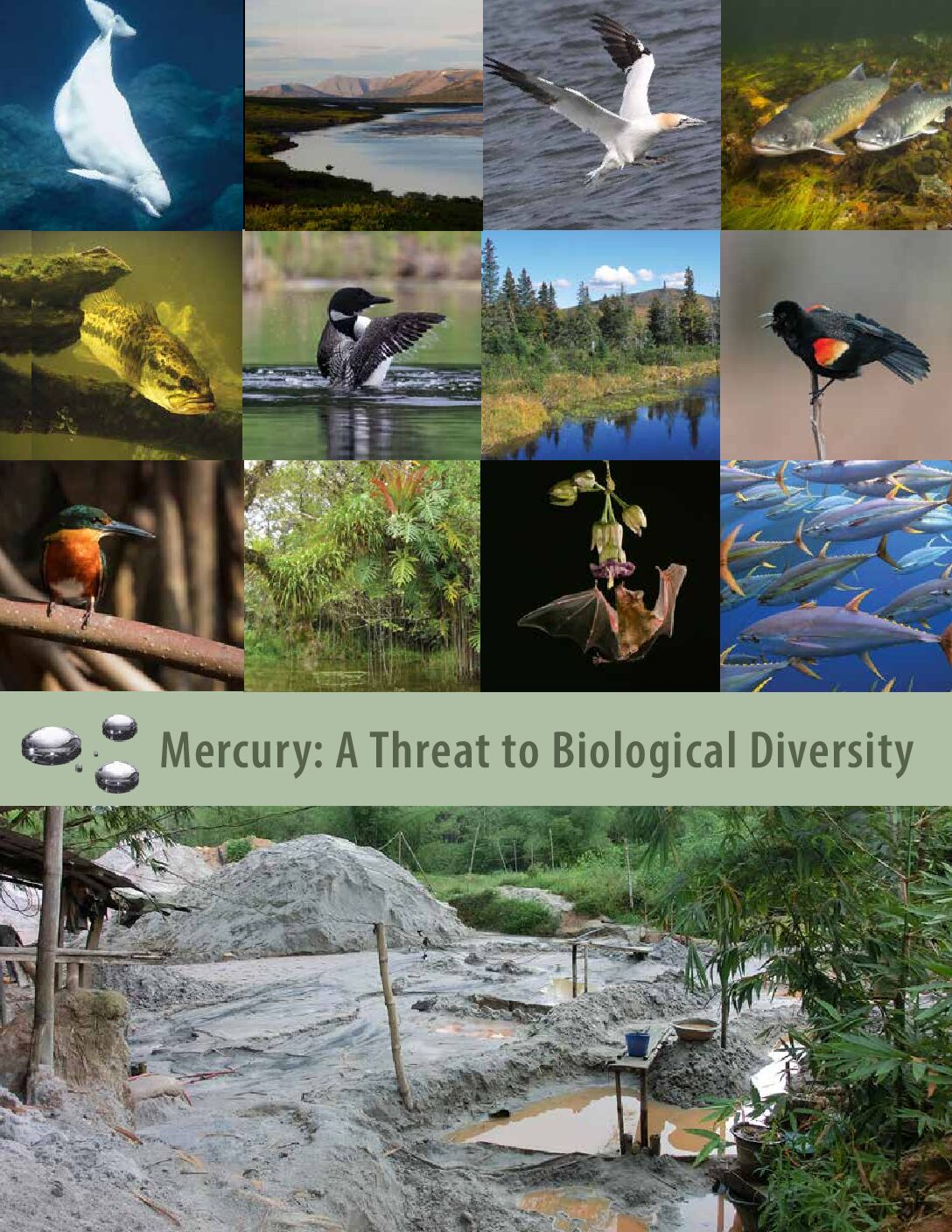The second part of UN Biodiversity Conference (Fifteenth meeting of the Conference of the Parties (COP-15) to the Convention on Biological Diversity (CBD) is being held in Montreal, December 7th-9th, 2022. The conference will see the adoption of the post-2020 Global Biodiversity Framework (GBF), which provides a strategic vision and a global roadmap for the conservation, protection, restoration and sustainable management of biodiversity and ecosystems for the next decade.
Mercury as a contaminant that impacts human and ecosystem health clearly fits within this framework. Greater inclusion is needed for GBF as the threat chemical pollution poses to biodiversity on a global scale has been acknowledged in the Post-2020 Global Biodiversity Framework.
CBD’s Action Target 7 proposes to regulate the release of chemicals to the environment and names specific indicators focusing on pesticides, nutrients, and plastic waste. BRI believes that Target 7 must include the following : non-agricultural biocides, PFAS, toxic metalloids including mercury, and endocrine disrupting chemicals, per new supporting publications and information found below. The following four sections briefly describe and highlight critical connections between the CBD and the Minamata Convention on Mercury.
1. Convention on Biological Diversity
 Signed by 150 government leaders at the 1992 Rio Earth Summit, the Convention on Biological Diversity is dedicated to promoting sustainable development. The Convention recognizes that biological diversity is about more than plants, animals and micro organisms and their ecosystems – it is about people and a need for food security, medicines, fresh air and water, shelter, and a clean and healthy environment in which to live. CBD is the international legal instrument for “the conservation of biological diversity, the sustainable use of its components and the fair and equitable sharing of the benefits arising out of the utilization of genetic resources” that has been ratified by 196 nations. Its overall objective is to encourage actions, which will lead to a sustainable future.
Signed by 150 government leaders at the 1992 Rio Earth Summit, the Convention on Biological Diversity is dedicated to promoting sustainable development. The Convention recognizes that biological diversity is about more than plants, animals and micro organisms and their ecosystems – it is about people and a need for food security, medicines, fresh air and water, shelter, and a clean and healthy environment in which to live. CBD is the international legal instrument for “the conservation of biological diversity, the sustainable use of its components and the fair and equitable sharing of the benefits arising out of the utilization of genetic resources” that has been ratified by 196 nations. Its overall objective is to encourage actions, which will lead to a sustainable future.
The CBD is launching its post-2020 Global Biodiversity Framework (GBF) that sets out an ambitious plan to implement broad-based action to bring about a transformation in society’s relationship with biodiversity and to ensure that, by 2050, the “shared vision of living in harmony with nature” is fulfilled. The mission of the framework for the period up to 2030, towards the 2050 vision is: “To take urgent action across society to conserve and sustainably use biodiversity and ensure the fair and equitable sharing In order to reduce threats to biodiversity, eight action-oriented targets were identified”
2. Mercury and the Connection to Biological Diversity
The CBD’s Global Biodiversity Outlook (GBO) declared that biodiversity stands at a crossroads with regard to the legacy it leaves to future generations. The GBO-5 identified five areas of action that could reduce the rate of biodiversity decline. Action 3 focuses on pollution, invasive alien species and overexploitation, where there is a clear link to the Minamata Convention on Mercury. One of the “Main Pressures” identified was pollution. Mercury contamination is one source of pollution that is negatively impacting many of the transitional pathways identified to achieving the 2050 vision, including the three listed below.

One Health contributes to reduced negative health impacts from many forms of pollution. One key component of this transition is to promote healthy diets as a component of sustainable consumption. The consumption of mercury-laden fish is seriously impacting many human communities. Preventing such pollution is grounds on which the Minamata Convention was formed.

A key part of this transition is to contribute to healthy coastal and marine ecosystems through reduced pollution including the sustainable marine harvest of fish that spawn in freshwater environments.

This transition also focuses on combatting pollution and improving water quality. As mercury methylation and uptake into terrestrial and freshwater food webs primarily occurs through freshwater systems, this transition also has clear overlaps with the Minamata Convention objectives.
Since its inception, BRI has been a leader in research designed to understand the exposure and effects of mercury in wildlife and ecosystems. Mercury concentrations in fish and wildlife in the United States and across the globe are known to routinely exceed human and wildlife health thresholds. Mercury policy development, implementation, and associated monitoring rely on accurate and neutral science to improve certainty.
3. BRI’s Mercury Biomonitoring Efforts

BRI is working on several fronts to conduct mercury biomonitoring across the globe. Monitoring mercury exposure to humans and wildlife will help the global community to meet the requirements of the Minamata Convention. Click the links below for more information:
- Mercury: A Threat to Biological Diversity
- Policy Brief: Options to holistically account for chemical pollutants threatening biodiversity
- Global Biotic Mercury Synthesis (GBMS)
- Mercury Monitoring in Biota
- Mercury Monitoring in Humans
- Regional Mercury Monitoring Networks
- Global Mercury Threat Assessment: Ecosystem Sensitivity and Risk Mapping
4. Integration of Global Conventions to Protect Biodiversity
Minamata Convention on Mercury: In the quest to conserve life on earth, many global environmental conventions have been initiated. As the threat of climate change continues to increase, a noticeable gap has emerged – the integration of these global conventions to achieve more than any single convention can on its own. The Minamata Convention on Mercury made a clear decision at COP (4.2) in MONTH 2022 to work collaboratively with the Convention for Biological Diversity.
Convention on Biological Diversity: The development of the Global Biodiversity Framework and the identification of Target 7 to reduce the threat of pollution creates a distinct area of overlap between the two conventions.
United Nations Environment Program: One major step towards integration can and must be the effective and efficient sharing of information to improve impact and policy effectiveness assessments. For example, the UNEP Situation Room has information on biodiversity and threats. UNEP has also been working with BRI to develop a mercury inventory toolkit and creating a mercury dashboard to capture the latest information on the sources of mercury contamination in countries. This information is generated via Minamata Initial Assessments (MIAs) as part of each country’s commitment to participating in the Minamata Convention.

Figure 1. UNEP dashboard with recent information on mercury contamination generated by Minamata Initial Assessments undertaken by the Minamata Convention.
Photo Credits: Header photo © BRI – Chris Sayers


